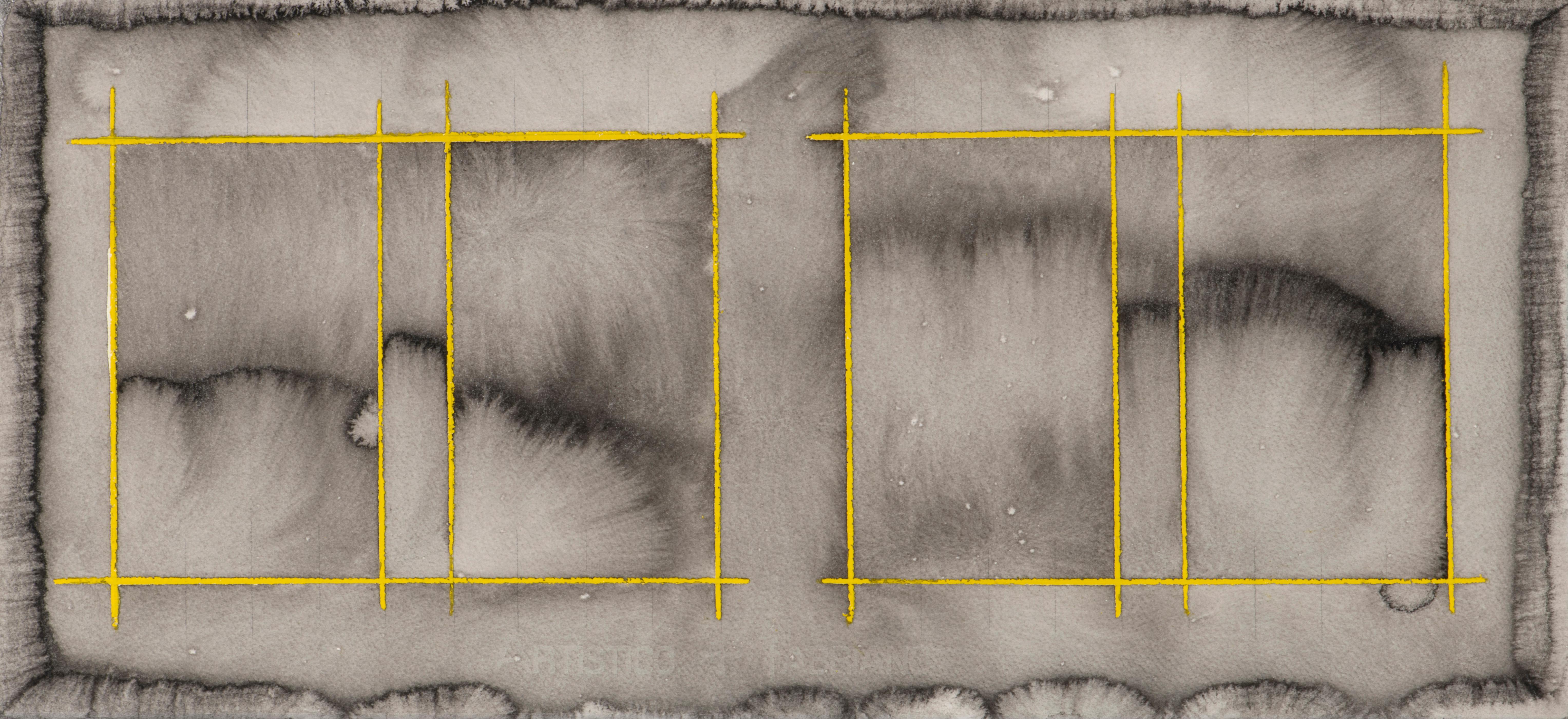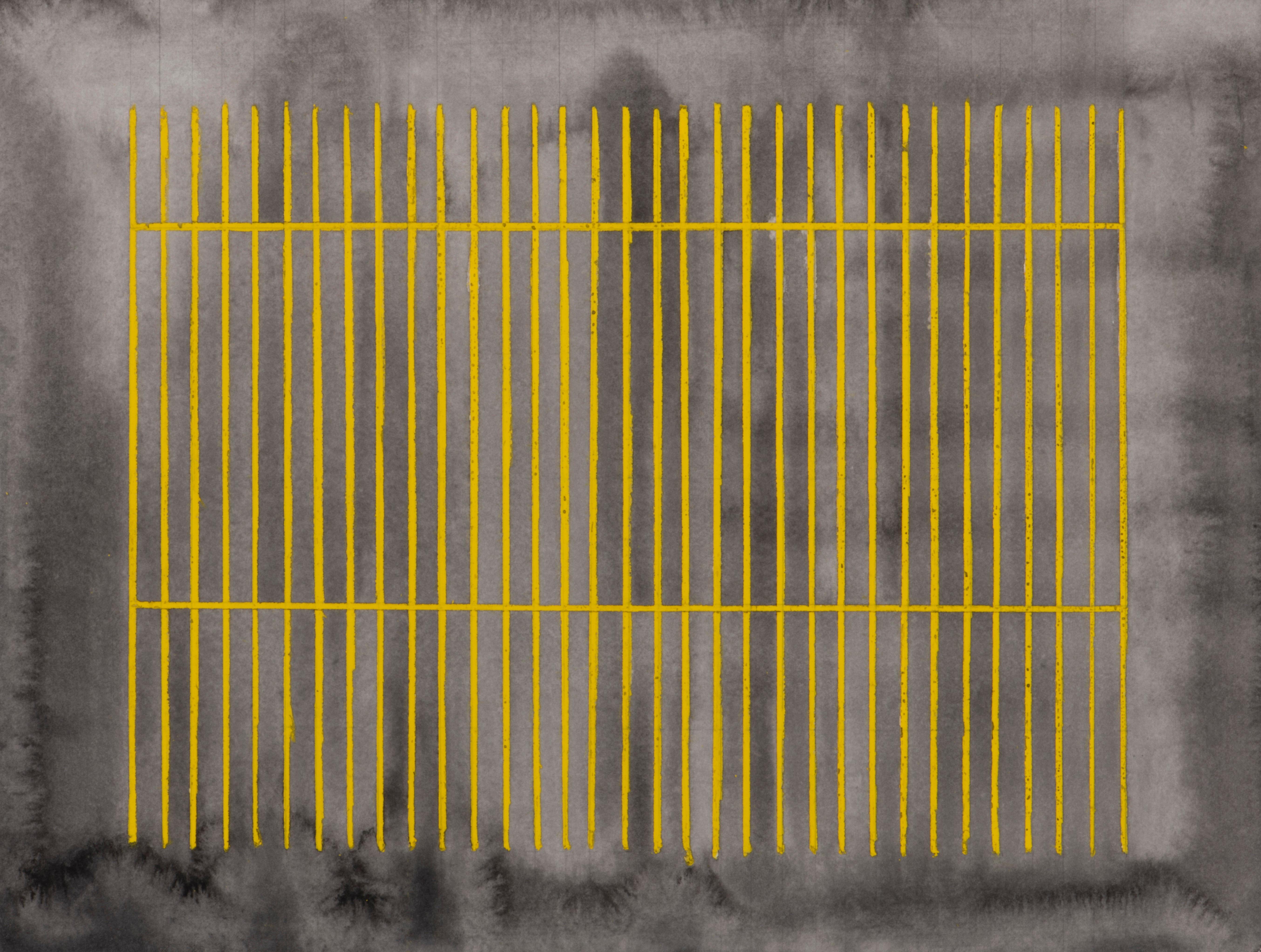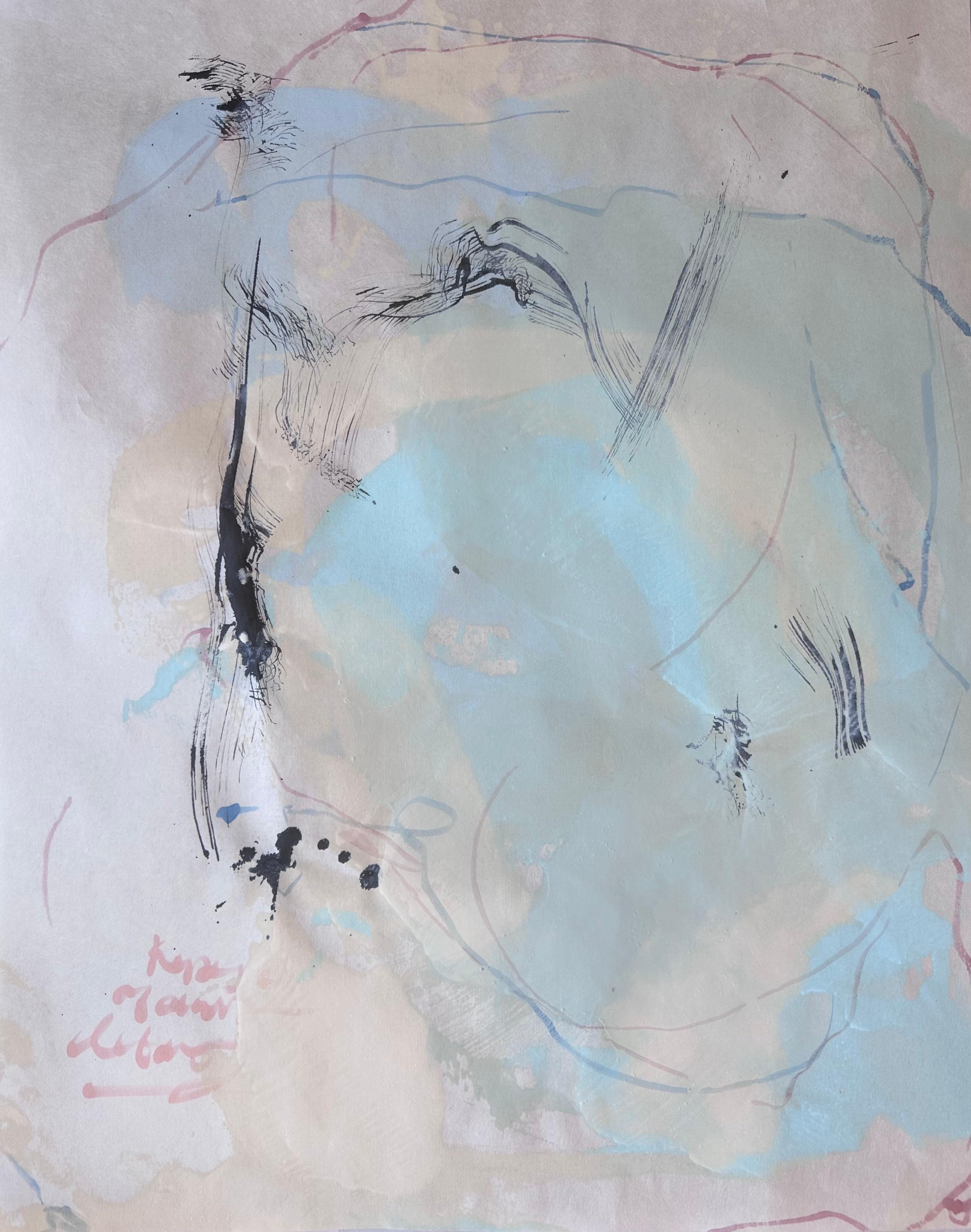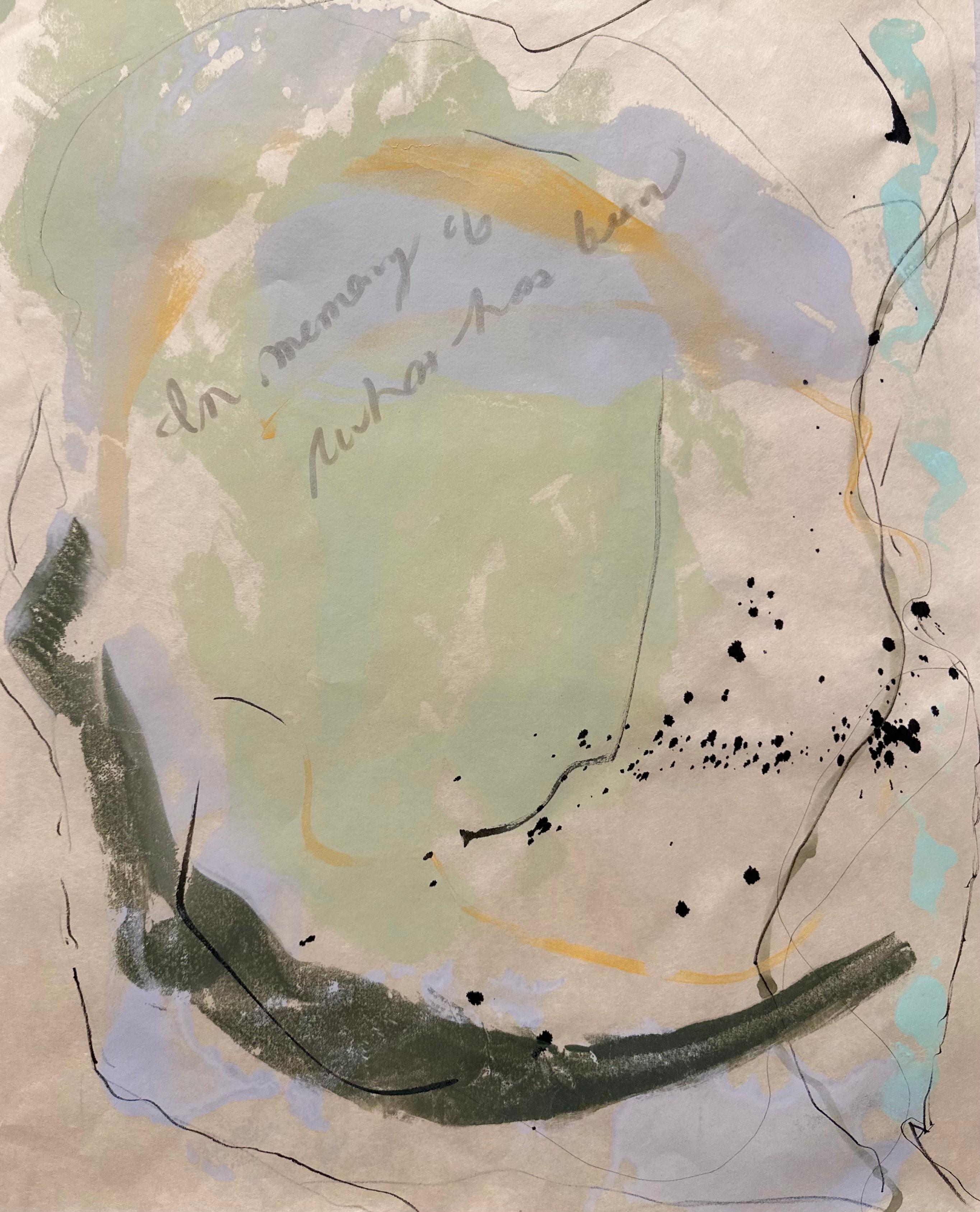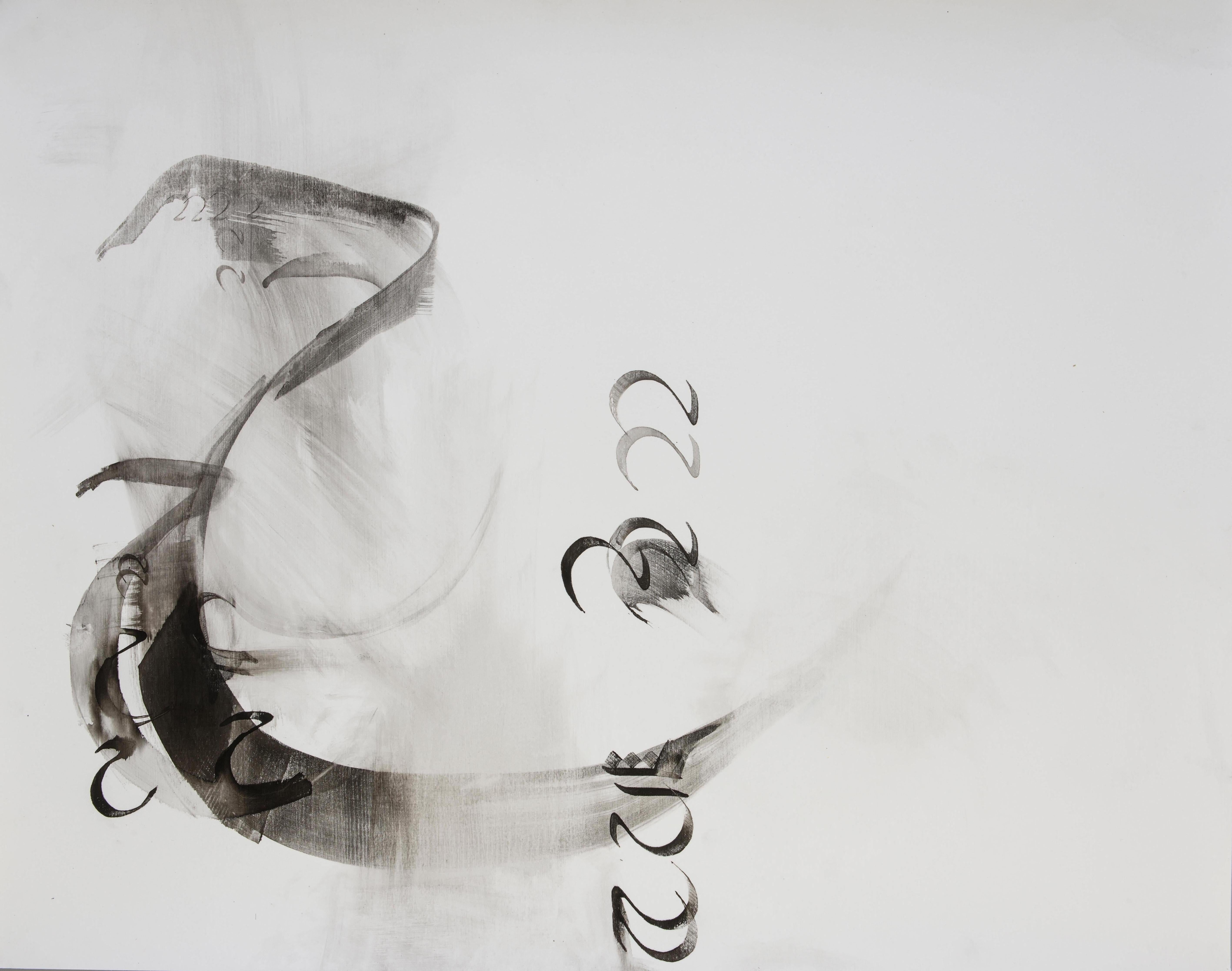Items Similar to Variation 59
Want more images or videos?
Request additional images or videos from the seller
1 of 6
Claude TousignantVariation 592018
2018
About the Item
He who wants to become a master of colour must see, feel and experience each individual colour in its many endless combinations with all other colours. Colour must have a mystical capacity for spiritual expression, without being tied to objects. – Johannes Itten, The Art of Colour (1961)
One of the leading artists in developing abstract painting in Canada, Claude Tousignant graduated from the School of Art and Design at the Montreal Museum of Fine Arts in 1951 when he had already begun to research abstract forms in his practice. Together with Guido Molinari (1933-2004), Tousignant actively promoted abstract art in the region, and through their work these artists collectively persuaded a society conditioned to representation in art that, in fact, it was possible to paint in a non-figurative style.
The new works presented at Art Mûr came about when the artist made sketches in order to find the simplest form with which to cut isosceles triangles into four-by-eight-foot sheets of plywood. Guided by intuition, Tousignant found a composition that seemed to him the most interesting structure through which to make paintings. He created five paintings with the same structure and composition but different colours, “with a different game between the colour masks.”
The perceiving eye that scans Tousignant’s painting traces it over a few times, skips, treads or bounces across the plains of colour from corner to corner and back again, and seeks to synthesize information into recognizable patterns. If the circular target paintings that make up one of Tousignant’s most prolific phases draw the viewer into the core of the canvas as through hypnosis, then the triangular masks, with their upward and downward slopes, have the ability to arrest and to throw the viewer off.
Sometimes, the senses are soothed by the harmonious use of disegno e colore (design and colour) that seem to frame and stabilize our perception of the work, as with the pink and yellow triangles surrounded by a sea of blue, Variation 59... #4. Other times, when more colours are incorporated – particularly contrasting hues of orange-red and blue-green as in Variation 59... #2 – that vie simultaneously for the viewer’s attention, the triangles’ segments seem to extend and radiate far outside of the limits of the frame, as though the work is part of a larger puzzle that the eye cannot behold and that only a step backwards – perspective – can address.
Tousignant’s paintings retain something of Minimalist sculpture, unabashedly devoid of content. But the works are not an empty shell on which can be projected phantasmagoric new forms. Beyond formalism, the works are in spite of their powers so self-contained that they resist interpretation. The bold use of colours functions as a shield, mesmerizing and subjugating the viewer to observe and to interrogate their own experience: what is it to perceive, to synthesize sensory information and to ultimately, to create meaning? Once each form and colour is seen, felt and experienced, then the capacity for spiritual expression can occur.
Claude Tousignant is one of those very few artists whose lives have been dedicated exclusively to their art. At school, the only classes that interested him were drawing and geometry. In 1948, he entered the School of Art and Design at the Montreal Museum of Fine Arts. Of all his teachers, Gordon Webber (himself a former student of Laszlo Moholy-Nagy) was the most influential in guiding his career, as he introduced him to avant-garde art and modern art theories, particularly those of the Bauhaus. Tousignant’s work has been the object of many solo exhibitions throughout his career, and he has participated in numerous group shows in Canada and abroad. These began with his first solo exhibition, at the café L’Échourie, in 1955, followed by another at the Galerie l’Actuelle in 1956 and The Responsive Eye at New York’s Museum of Modern Art in 1965. That same year, he represented Canada at the 8th Bienal de São Paulo. In the following years, the retrospective Claude Tousignant opened at the National Gallery of Canada in 1973, before travelling to several other venues, including the Musée d’art contemporain in Montreal, the Vancouver Art Gallery, the Art Gallery of Ontario in Toronto and the Canadian Cultural Centre in Paris; Claude Tousignant: Sculptures was held at the Montreal Museum of Fine Arts in 1982; and Claude Tousignant : monochromes, 1978-1993 was presented at the Musée du Québec in 1994. The Musée d’art contemporain devoted an exhibition to him, titled Dyptiques 1978-1980, in 1980, as well as organizing an exhaustive retrospective of his work in 2009. Tousignant is represented in all of Canada’s major museums, and his works are included in numerous corporate and private collections. Over the course of his career, Claude Tousignant has won the prestigious Victor Martyn Lynch-Staunton Award (presented by the Canada Council for the Arts for outstanding achievement by mid-career artists), in 1974, and the Prix Paul-Émile-Borduas (the highest visual arts distinction awarded by the Quebec government), in 1989. He was also appointed an Officer of the Order of Canada in 1976 and in 2010 was a recipient of the Governor General’s Award in Visual and Media Arts.
- Creator:Claude Tousignant (1932, Canadian)
- Creation Year:2018
- Dimensions:Height: 30 in (76.2 cm)Width: 41.5 in (105.41 cm)
- Medium:
- Movement & Style:
- Period:
- Condition:
- Gallery Location:Montreal, CA
- Reference Number:1stDibs: LU4764267362
About the Seller
5.0
Vetted Seller
These experienced sellers undergo a comprehensive evaluation by our team of in-house experts.
Established in 1996
1stDibs seller since 2014
96 sales on 1stDibs
- ShippingRetrieving quote...Ships From: Montreal, Canada
- Return PolicyA return for this item may be initiated within 7 days of delivery.
More From This SellerView All
- Section 1 : Story of a Global (De Vonk 1)By Jinny YuLocated in Montreal, QuebecText by Michael Rattray Nomadism is an abstract. It describes a freedom to potentially be anywhere at anytime, to take from whatever can be taken, and to leave whenever to be somewh...Category
Early 2000s Abstract Abstract Paintings
MaterialsMetal
- Section 1 : Story of a Global Nomad (Green Mountains)By Jinny YuLocated in Montreal, QuebecText by Michael Rattray Nomadism is an abstract. It describes a freedom to potentially be anywhere at anytime, to take from whatever can be taken, and to leave whenever to be somewh...Category
Early 2000s Abstract Abstract Paintings
MaterialsMetal
- Section 1 : Story of a Global (Crazy Hokusai)By Jinny YuLocated in Montreal, QuebecText by Michael Rattray Nomadism is an abstract. It describes a freedom to potentially be anywhere at anytime, to take from whatever can be taken, and to leave whenever to be somewh...Category
Early 2000s Abstract Abstract Paintings
MaterialsMetal
- Section 2 : Story of a Global Nomad (Tsunami)By Jinny YuLocated in Montreal, QuebecText by Michael Rattray Nomadism is an abstract. It describes a freedom to potentially be anywhere at anytime, to take from whatever can be taken, and to leave whenever to be somewh...Category
2010s Contemporary Abstract Paintings
MaterialsMetal
- Maquette pour l’Hôpital Ste-Justine – Niveau 7By Judith BerryLocated in Montreal, QuebecJudith Berry was born in London, Ontario and grew up in Saskatoon, Saskatchewan. She studied at the Nova Scotia College of Art and Design in Halifax and spent one year in the Studio ...Category
2010s Abstract Abstract Paintings
MaterialsPaper, Gouache
- Maquette pour l’Hôpital Ste-Justine – Niveau 1By Judith BerryLocated in Montreal, QuebecJudith Berry was born in London, Ontario and grew up in Saskatoon, Saskatchewan. She studied at the Nova Scotia College of Art and Design in Halifax and spent one year in the Studio ...Category
2010s Abstract Abstract Paintings
MaterialsPaper, Gouache
You May Also Like
- Untitled (Study for Līnea), 2021Located in Washington, DCPoured beeswax work by Mary Early from her "Study for Līnea" series. "The production, or “pouring,” of beeswax elements has become a meditative process that is integral to my art practice, serving as an observation of time, materials, and space. The raw beeswax I use has taken its form at the end of a long series of natural processes followed by a manufacturing process, and once it is in my hands, the studio becomes a factory. I apply my own methods of transforming the material by casting the beeswax into three-dimensional forms. Once I have fixed both a place and a time in the future for a potential installation, I begin to determine how the beeswax lines will take their aggregated shape in that space and, simultaneously, how many lines might be manufactured for that particular space in the amount of time available." Mary Early (born 1975, Washington, DC) lives and works in Washington, DC. She studied visual art, film, and video at Bennington College, and her work has been exhibited at the United States Botanic Garden, Washington Project for the Arts, the Corcoran Gallery of Art, Second Street Gallery (Charlottesville, VA), Hemphill Fine Arts (Washington DC,) the Austrian Cultural Forum (Washington DC), Galerie Im Ersten (Vienna, Austria), Kloster Schloss Salem (Salem, Germany), Kunstlerbund Tubingen (Tubingen, Germany), and the American University Museum (Washington DC) among other regional and national galleries. Her early work incorporated formed concrete, tarpaper and paraffin wax, fabricated wood structures, and, increasingly over the years, surfaces coated with wax as a method of preserving or concealing an object within. Recent works have relied solely on solid forms cast in wax, abandoning the use of any permanent armature. Temporary installations are guided by schematic drawings and plans, which then serve as a permanent record. In 2014 she exhibited her first large-scale installation of wax lines at Second Street Gallery in Charlottesville, VA, followed by temporary installations in response to various historical sites in Salem, Germany (2016) and Tubingen Germany (2017). In 2017 she participated in the exhibition “Twist-Layer-Pour” at the American University Museum, which included Untitled [Curve], an installation of thousands of beeswax lines assembled on the floor of the museum. In spring 2018 she was commissioned to create a temporary installation at the Sun Valley Center for the Arts, Sun Valley Idaho. This work took the form of two intersecting curtains of hanging beeswax lines bisecting a 12’ foot x 18’ foot room, providing an immersive and enclosed viewing space. Early’s work is included in the collections of the US Department of State/Embassy of Panama, Kimpton Hotels, and the District of Columbia Art Bank among other public and private collections. She is a recipient of the Artist Fellowship Grant from the DC Commission on Arts & Humanities, Washington DC (2020, 2019, 2018, 2017, 2016, 2015, 2014, 2011, 2009, 2007). Early is the director of HEMPHILL Fine Arts, Washington, DC, and serves on the boards of Hamiltonian Artists and Washington Sculptors Group. She handles the work of contemporary artists and artist estates, including the work of William Christenberry, Colby Caldwell, Hedieh Javanshir Ilchi, Linling Lu, Mingering Mike, Robin Rose, Renée Stout...Category
21st Century and Contemporary Abstract Geometric Abstract Paintings
MaterialsWax Crayon, Sumi Ink, Archival Paper, Graphite
- Untitled (Study for Līnea)Located in Washington, DCPoured beeswax work by Mary Early from her "Study for Līnea" series. "The production, or “pouring,” of beeswax elements has become a meditative process that is integral to my art practice, serving as an observation of time, materials, and space. The raw beeswax I use has taken its form at the end of a long series of natural processes followed by a manufacturing process, and once it is in my hands, the studio becomes a factory. I apply my own methods of transforming the material by casting the beeswax into three-dimensional forms. Once I have fixed both a place and a time in the future for a potential installation, I begin to determine how the beeswax lines will take their aggregated shape in that space and, simultaneously, how many lines might be manufactured for that particular space in the amount of time available." Mary Early (born 1975, Washington, DC) lives and works in Washington, DC. She studied visual art, film, and video at Bennington College, and her work has been exhibited at the United States Botanic Garden, Washington Project for the Arts, the Corcoran Gallery of Art, Second Street Gallery (Charlottesville, VA), Hemphill Fine Arts (Washington DC,) the Austrian Cultural Forum (Washington DC), Galerie Im Ersten (Vienna, Austria), Kloster Schloss Salem (Salem, Germany), Kunstlerbund Tubingen (Tubingen, Germany), and the American University Museum (Washington DC) among other regional and national galleries. Her early work incorporated formed concrete, tarpaper and paraffin wax, fabricated wood structures, and, increasingly over the years, surfaces coated with wax as a method of preserving or concealing an object within. Recent works have relied solely on solid forms cast in wax, abandoning the use of any permanent armature. Temporary installations are guided by schematic drawings and plans, which then serve as a permanent record. In 2014 she exhibited her first large-scale installation of wax lines at Second Street Gallery in Charlottesville, VA, followed by temporary installations in response to various historical sites in Salem, Germany (2016) and Tubingen Germany (2017). In 2017 she participated in the exhibition “Twist-Layer-Pour” at the American University Museum, which included Untitled [Curve], an installation of thousands of beeswax lines assembled on the floor of the museum. In spring 2018 she was commissioned to create a temporary installation at the Sun Valley Center for the Arts, Sun Valley Idaho. This work took the form of two intersecting curtains of hanging beeswax lines bisecting a 12’ foot x 18’ foot room, providing an immersive and enclosed viewing space. Early’s work is included in the collections of the US Department of State/Embassy of Panama, Kimpton Hotels, and the District of Columbia Art Bank among other public and private collections. She is a recipient of the Artist Fellowship Grant from the DC Commission on Arts & Humanities, Washington DC (2020, 2019, 2018, 2017, 2016, 2015, 2014, 2011, 2009, 2007). Early is the director of HEMPHILL Fine Arts, Washington, DC, and serves on the boards of Hamiltonian Artists and Washington Sculptors Group. She handles the work of contemporary artists and artist estates, including the work of William Christenberry, Colby Caldwell, Hedieh Javanshir Ilchi, Linling Lu, Mingering Mike, Robin Rose, Renée Stout...Category
21st Century and Contemporary Abstract Geometric Mixed Media
MaterialsWax Crayon, Sumi Ink, Archival Paper, Graphite
- And His Open Arms EmbracedLocated in Clayton, MOIn And His Open Arms Embraced color, line, shape, and texture collide with handwritten romantic fragments of prose on Kozuke ivory paper. This one-of-a-kind, unmounted encaustic mono...Category
2010s Abstract Abstract Paintings
MaterialsWax Crayon, India Ink, Encaustic, Archival Paper, Rice Paper, Pen, Color...
- In Memory Of What Has BeenLocated in Clayton, MOIn Memory Of What Has Been color, line, shape, and texture collide with handwritten romantic fragments of prose on Kozuke ivory paper. This one-of-a-kind, unmounted encaustic monotyp...Category
2010s Abstract Abstract Paintings
MaterialsWax Crayon, India Ink, Encaustic, Archival Paper, Rice Paper, Pen, Color...
- Etude 11 - abstract calligraphy ink drawing / painting on paper in black & whiteBy Nazanin MoghbeliLocated in Bryn Mawr, PANazanin Moghbeli is an Iranian-American artist with training in Persian calligraphy, miniature painting, and music. She borrows techniques from Irania...Category
2010s Abstract Abstract Drawings and Watercolors
MaterialsInk, Archival Paper, Graphite
- Etude 8 - abstract calligraphy ink drawing / painting on paper, in black & whiteBy Nazanin MoghbeliLocated in Bryn Mawr, PANazanin Moghbeli is an Iranian-American artist with training in Persian calligraphy, miniature painting, and music. She borrows techniques from Iranian calligraphy to create abstract...Category
2010s Abstract Expressionist Abstract Drawings and Watercolors
MaterialsArchival Paper, Graphite, Ink
Recently Viewed
View AllMore Ways To Browse
E Council Painting
Cafe Society Art
Large Painting Monochrome Painting
Pink Shell Art
Make Up Organizer
Triangular Painting
D Scan
Sea Shell Painting
Shield Shell
Large Abstract Monochrome
Mask Canada
Pink Mask Art
Large Monochrome Abstract Painting
Dyptique Art
Molinari Guido
Keith Haring Signed Pop
Vintage Detroit Art
Peter Small
